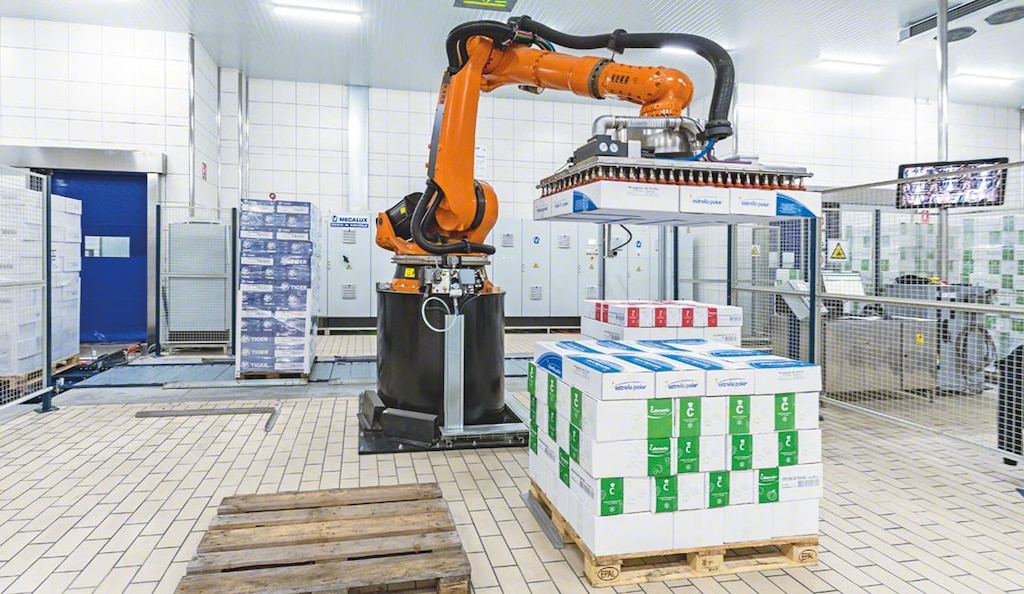
Fulfillment technology: what is it?
Employing technology in the order fulfillment process raises productivity, reduces error rates, and makes operators more efficient.
The consolidation of ecommerce has made order fulfillment much more complex due to the different channels in which companies and users interact. To combat costlier logistics operations — picking can account for more than 60% of warehouse operating costs — businesses invest in technology and automated systems to optimize order fulfillment.
Fulfillment technology for effective order preparation
The use of fulfillment technology in preparing orders greatly increases logistics efficiency. Order picking is one of the most complex tasks in the supply chain, which is why companies implement picking assistance technologies.
The devices are connected to a warehouse management system (WMS), which indicates the quantities and types of products to collect, optimizes operator pick paths, and distributes goods according to needs, among other functions. Fulfillment technology can be applied to both manual and automated facilities, as well as to the main order fulfillment methods: person-to-goods (the operator moves to the products) and goods-to-person (the products are brought to the operator’s workstation automatically).
One of the goals of implementing technology in order fulfillment is to cut the picking error rate. Choosing the wrong product and the wrong quantities are bound to result in customer returns, which have become a real headache for ecommerce retailers. Consulting firm Deloitte indicates that the e-commerce boom has driven up order return rates by 33% over the last decade. Additionally, Deloitte forecasts that by 2022, products worth $573 billion will be returned annually.
Fulfillment technology for manually run warehouses
Manually operated facilities can reap the benefits of fulfillment technology by means of picking assistance devices:
- RF scanners: generally wireless, this equipment is tasked with reading barcodes (or other types of tags, e.g., QR or RFID). They enable operators to follow instructions from the WMS and to confirm the completion of tasks.
- Voice picking systems: this technology consists of devices connected to the WMS that provide operators with verbal instructions, which they receive via their headsets. As this frees up operators’ hands, they can pick products and packages in a more comfortable and agile way compared to RF picking.
- Pick-to-light system: these comprise lights and numbers installed on the racks. They show operators which location to take the product from and in what quantity. They’re connected to the WMS to ensure optimal operation.
- Put-to-light system: this solution shows operators where to place the goods and how much product to put in each package, box, or drawer in the shelving. The lights can be installed on picking shelves or carts. Connected to the WMS, the main purpose of put-to-light systems is to help operators to quickly and correctly sort products in the boxes that will be used to ship the orders.
Before implementing these assistance systems, it’s essential to define the order picking strategy that best meets the needs of your facility. It’s also important to design the picking area taking into account the ergonomics and safety of the workers who will be operating in it. The pick stations should be outfitted with a WMS to coordinate operations. They should also have a work table with a computer and printer to manage the labels and documents associated with the orders.
When picking products in the warehouse, the operators follow instructions from the WMS via the picking list. This contains all the shipping data, the locations of the goods, and any other aspects related to the preparation of the order, e.g., the operator pick path. With picking lists, whether printed or on a picking assistance device, orders can be prepared diligently and without mistakes.
In facilities managed manually, the software controls the location of each product, showing operators the aisle and rack number, the storage level, and the quantity of items to remove, among other data. The WMS organizes and orchestrates the order picking strategy in line with factors such as the warehouse layout, order priorities, the picking method used, and the number of operators.

Fulfillment technology for automated warehouses
The main advantage of fulfillment technology in automated facilities is that it works according to the goods-to-person criterion, i.e., the products are brought directly to the operators via automated systems. This way, operators receive the items required to prepare orders at their pick stations, without having to move from their posts.
The need to boost throughput and bring down costs incurred in picking has led to the widespread use of automated picking robots:
- Anthropomorphic arms: these machines automatically handle individual items or sets of boxes, normally with a high weight, to carry out mass picking. These robots perform pick and place, i.e., they collect products from one location and put them in another.
- Autonomous mobile robots: commonly referred to as AMRs, autonomous mobile robots are devices capable of carrying out tasks and traveling around a facility without operator supervision. They are charged with moving products safely to the pick stations. AMRs are outfitted with sensors and AI (artificial intelligence) software that incorporates a digital layout of the warehouse, allowing them to interpret their surroundings.
In addition to picking robots, order fulfillment technology includes automatic handling equipment such as:
- Stacker cranes: these robots move automatically along the length and height of the storage aisles. Although their function is to store goods, they also increase the flow of movements by working nonstop, supplying pick stations with products more rapidly.
- Roller conveyors: these machines move, accumulate, and distribute goods to the specific positions required by the logistics operations. Conveyors can continuously supply the pick stations with the products they need to fill orders.
Automatic handling equipment and picking robots move goods quickly and constantly, streamlining order fulfillment. Both systems work by executing the commands issued to them by the WMS. The software also devises the slotting strategy, i.e., where to store products in the automated storage systems. A good slotting strategy analyzes the time spent picking each product and determines the optimal positions of the goods. It does this to ramp up throughput in the facility and to shorten the total time taken to carry out these movements.

Fulfillment technology for streamlined picking
There are multiple logistics solutions designed to optimize and maximize efficiency in order fulfillment. These solutions not only scale up productivity but also minimize errors, e.g., choosing the wrong product, selecting inadequate quantities, and mixing two or more orders, among others. Investing in WMS software is crucial: it will make the difference when it comes to effective order fulfillment.
Incorporating fulfillment technology will improve results and enhance your business growth. Interested in getting the most out of your logistics operations? Be sure to get in touch. One of our expert consultants will advise you on which technology will optimize your order fulfillment needs.
